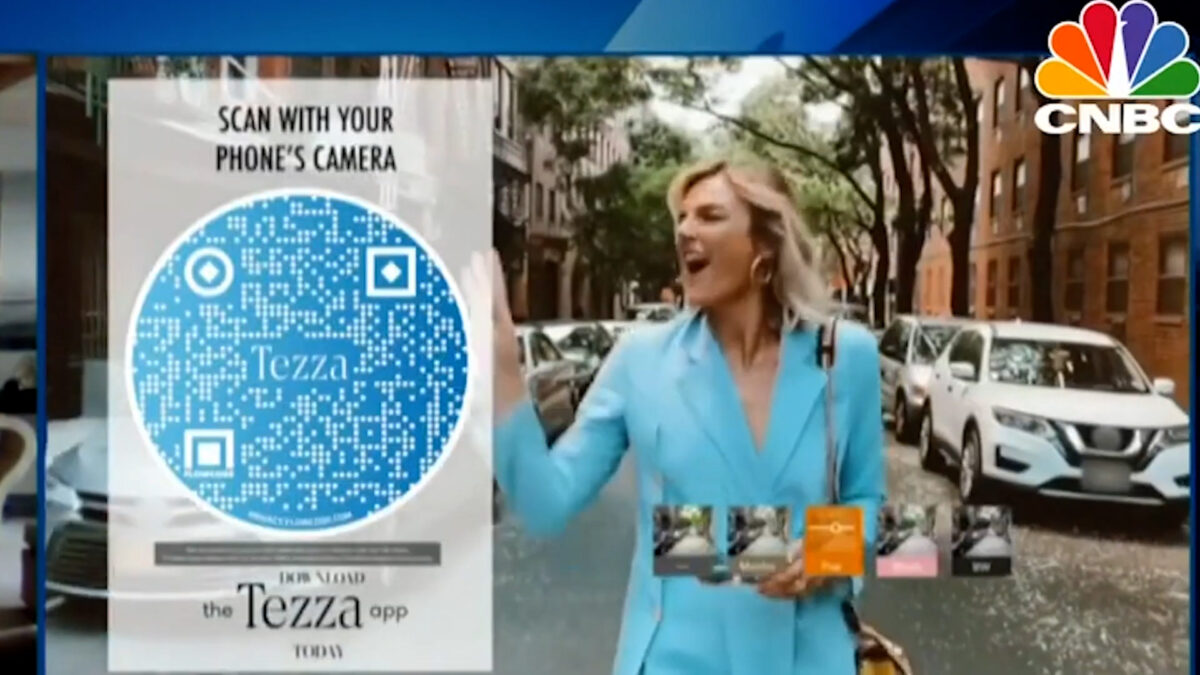There’s a revolution coming to TV news and it might look familiar. QR codes are not new. They are everywhere. But an innovator in the space wants to improve upon existing QR technology, creating a new dynamic and standard in TV news. Meet Flowcode.
Every once in a while I am asked to take a look at an emerging technology or technique to increase a station’s digital saturation. In this case, I was asked to consider how QR codes could improve TV news. I thought the idea was brilliant and had incredible potential. QR codes are popping up everywhere and are being used in ways to make your life easier already. My first instinct was creating meaningful connections with viewers. But, the journalist in me soon took over and I wanted to learn more and check my hunch.
I thought about the constant struggle newsrooms face trying to directly connect with viewers. That is especially true now, with so many newscasts to produce each day. 4 hours in the morning, noon and then 3 PM until 6:30 or 7 PM. Oh, and don’t forget the late evening newscast of record as well as ever increasing digital content demands. Traditionally, broadcasting companies rely on ratings data companies like Nielsen and Comscore. Then, they call in consulting groups to get research information about who their audiences are and what they really want.
If you ask news managers, many will tell you that the research often feels flawed. The content topic suggestions and ratings gains do not always match what the research shows should happen. It leads to a lot of guessing when they try developing a brand and creating trust with the audience. Minute-by-minute audience viewing reports are also a guessing game. Between grinding out shows stations look for trends in those reports and hope to get it right.
These methods lead to a real mixed bag of results. A Gallup/Knight Foundation study found more than 80% of Americans say the news media is at least “very important” in providing accurate information. Good news, right? But then comes the conundrum: An Accenture digital consumer survey found TV is the only category of device experiencing uniform, double-digit usage declines. This is worldwide and in nearly all age groups. Accenture also found 87% of consumers use a second screen while watching TV.
The TV news industry understands this is happening. But how do you link up the TV newscast with the tablet in the viewers lap?
Consider this, 65 % of people who use a second screen have looked up information on a product in a TV show. Meanwhile, TV news viewers told focus groups around the world in a Reuters Institute study that they think news organizations rely too much on clickbait and sensationalism. Many said they felt news organizations wanted to trick or provoke them into watching. They also wondered who is tracking what they click on station websites. Study participants largely seemed resigned this is just the way it is, and it hurts trust. Other studies show audiences also express disdain at banner ads and sponsorships which may lead to a harmful reputation.
A Pew Research Center survey gives some hope though. 75% surveyed say confidence in news media has the potential to improve. The survey also shows brand loyalty isn’t what it once was. 63% of news consumers Pew surveyed don’t feel strong loyalty. Many say they feel local news can still work on directly connecting with the community more.
Cue the Flowcode option. Founder and CEO Tim Armstrong says his company has launched “next-generation” QR codes. No app needed. “It takes you directly there with no stopping off at any large internet companies” Armstrong says. This means much more security for the audience. Flowcode comes with privacy built-in to meet GDPR and CCPA standards. The direct link can help eliminate recent concerns being raised over QR code security. The custom design of the code also matches the branding of the station, which is helpful as stations grow their brand or continue to build on a strong brand in the DMA. Flowcode QR’s in targeted connection can even increase a station’s brand value.
Television stations have begun experimenting with QR codes to provide added content, especially during weather events with encouraging results. Take a look at this roundup of ways QR codes are starting to be used at local stations. Innovative starts for sure. Flowcode is starting to partner with major broadcast groups including Sinclair Broadcast Group and Nexstar Broadcasting. Driving as much as a 50 percent increase in app downloads. Also darn smart. eMarketer projects 99.2 million QR code users by 2024. That’s up 28 million more from 2019.
As the TV news industry grapples with how to reach their audience directly Flowcode also offers data science and analytics. The TV industry can push for options to figure out why an audience turned off at 10-minutes after the hour, instead of simply knowing that they did tune out at that point. It offers a way for stations to find out if the audience will watch more long form content on OTT platforms. There is also the opportunity to sponsor content without the anchors having to actually say the name of the sponsor. All ways to prove a station has heard what the community wants to learn, values the time taken to watch, and is eager to meet the audience directly where it is. That includes holding a phone or tablet and lounging on the couch while watching the news. Yep, that’s working for you alright.




